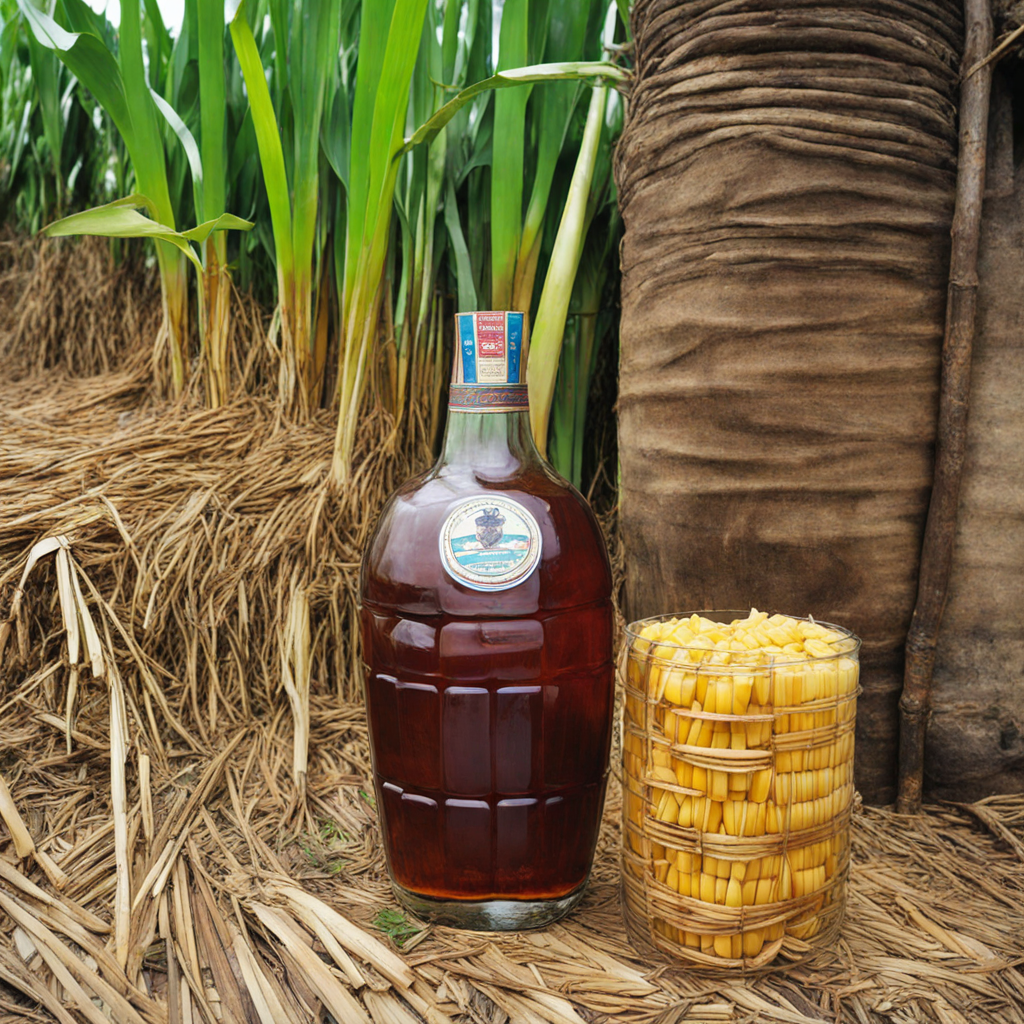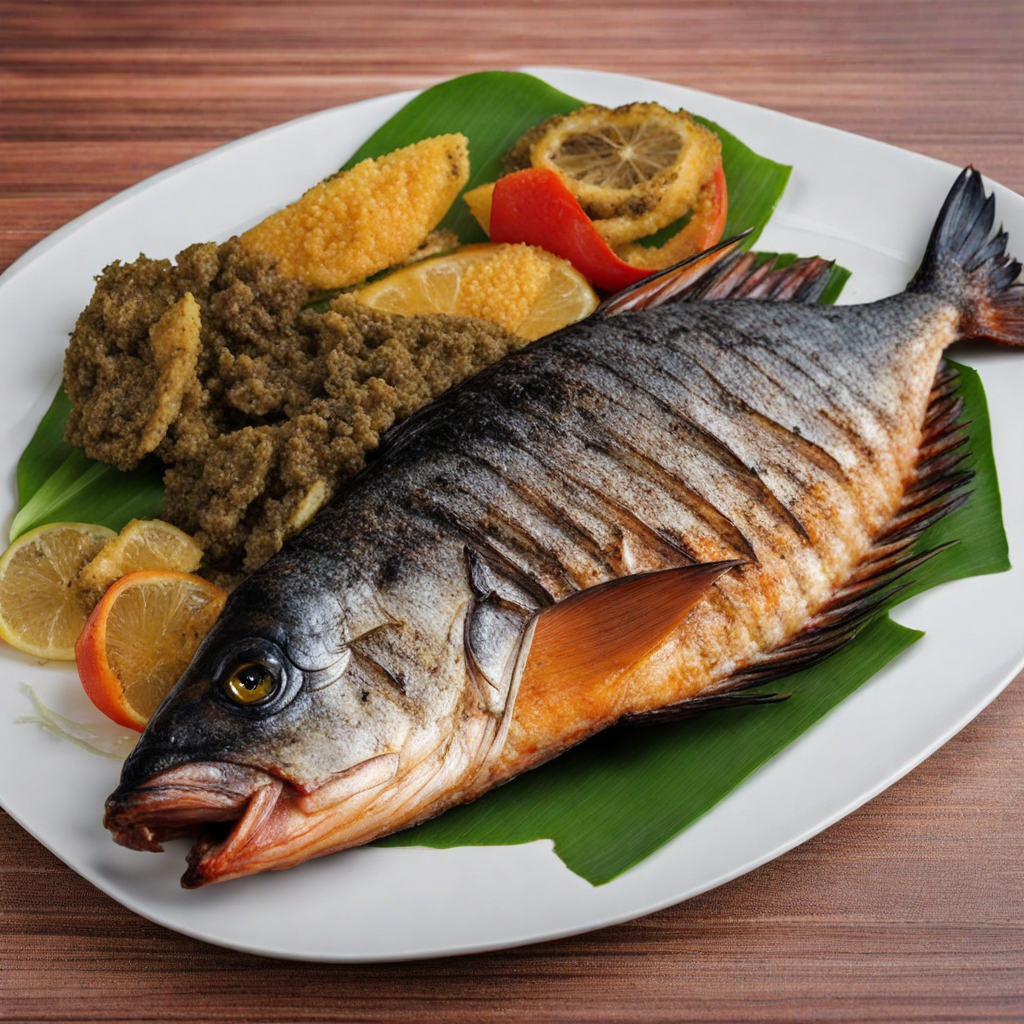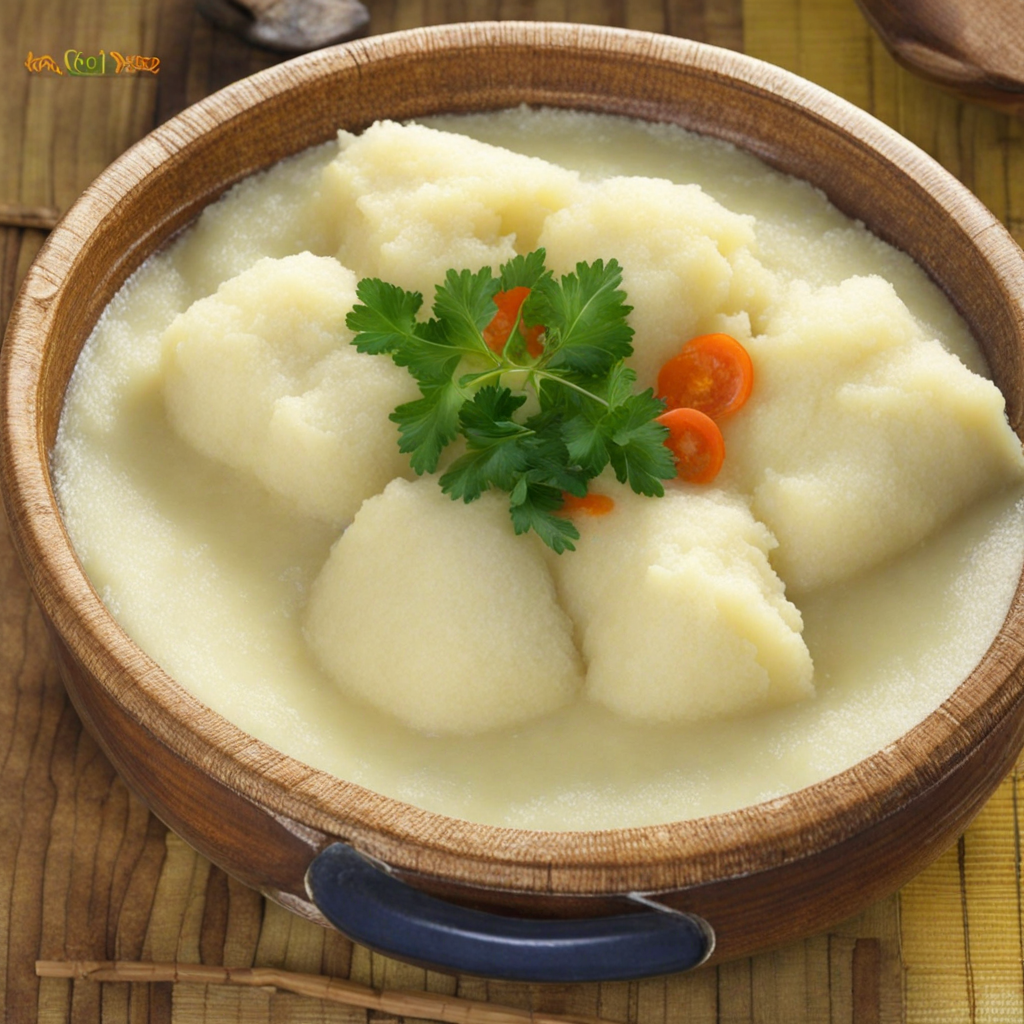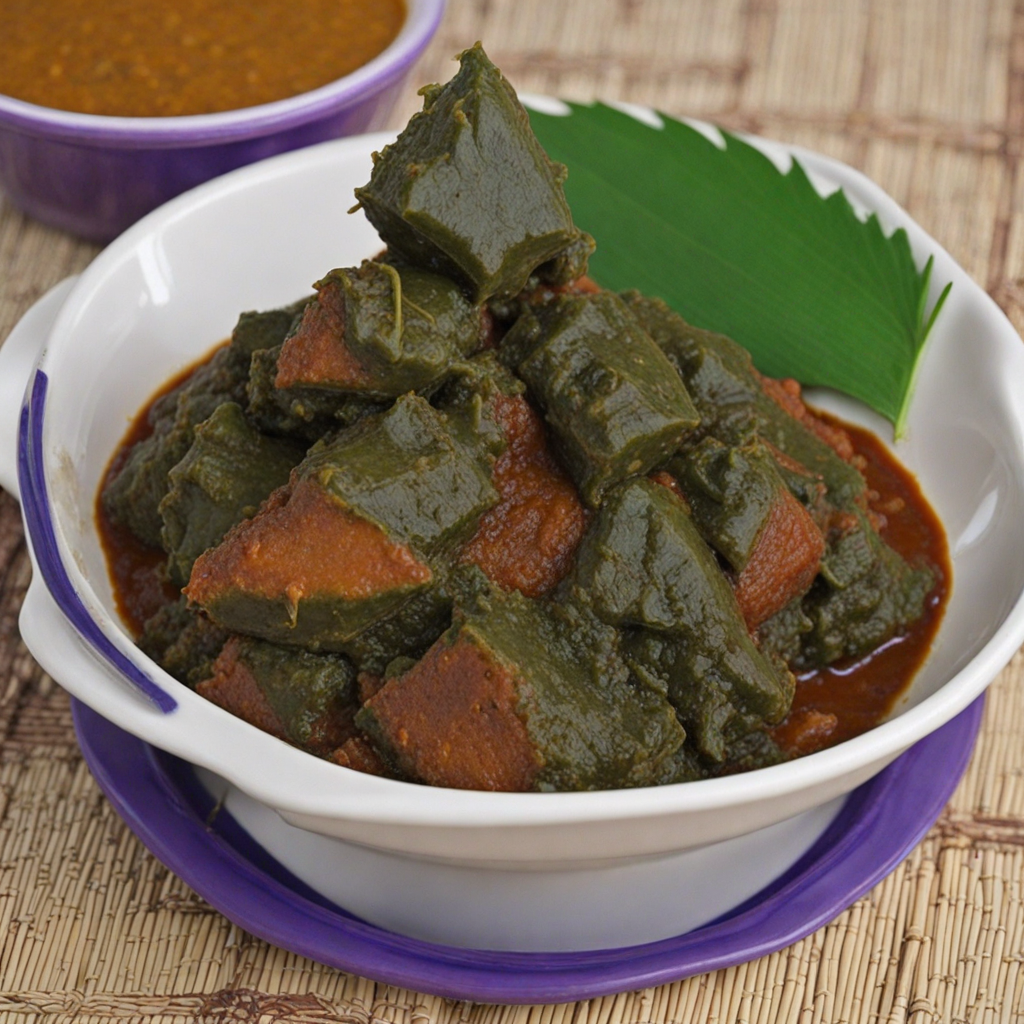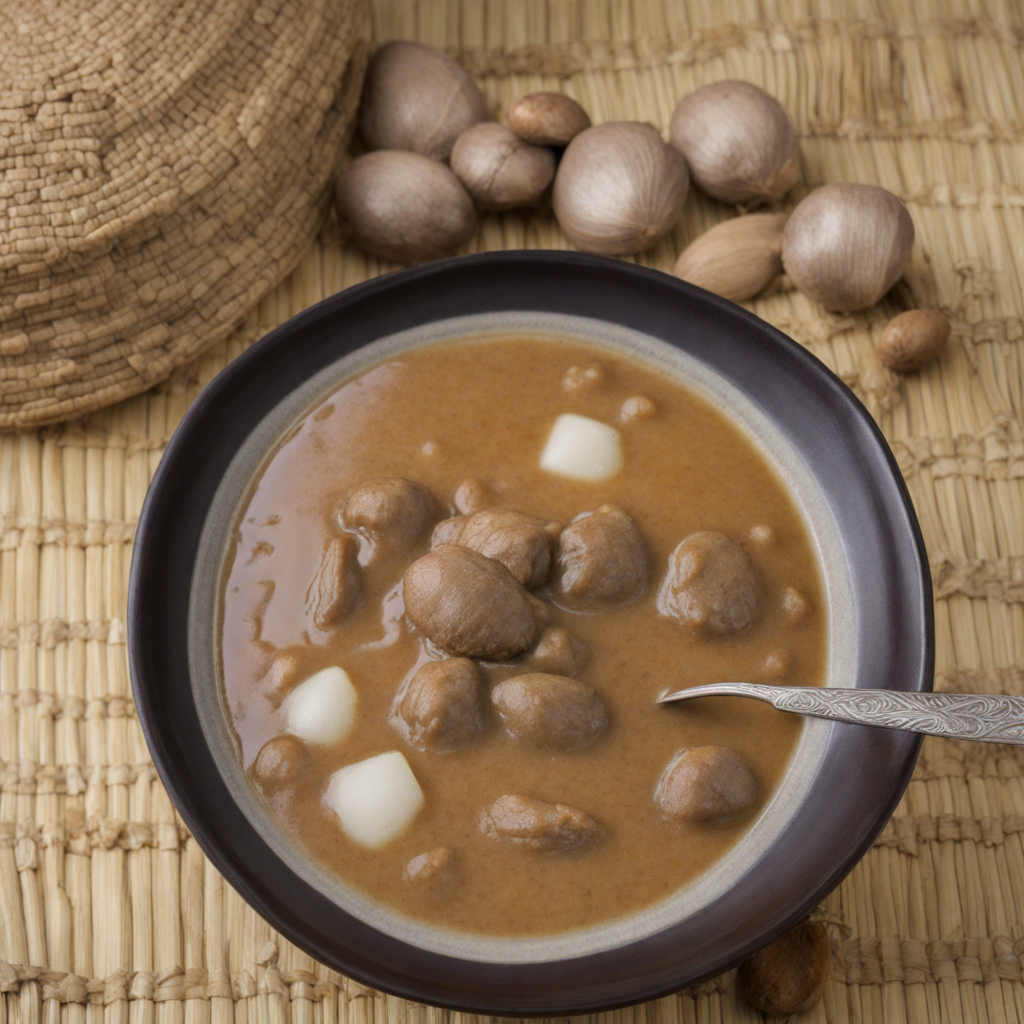Lotoko
Lotoko is a traditional dish from the Democratic Republic of the Congo, celebrated for its rich and diverse flavors. This hearty meal is primarily made from cassava leaves, which are finely chopped and cooked to perfection. The leaves impart a vibrant green color and a unique earthy taste, often described as slightly nutty. The dish is typically enriched with ground peanuts or palm oil, adding a luscious texture and depth of flavor that complements the natural bitterness of the leaves. Some variations may include other local ingredients, such as smoked fish or meat, which contribute to a more complex profile, making Lotoko a comforting staple in Congolese cuisine. The preparation of Lotoko is an art form in itself. Traditionally, the cassava leaves are pounded and mixed with various spices, creating a fragrant blend that tantalizes the senses. The cooking process can take several hours, allowing the flavors to meld beautifully. As it simmers, the dish emits an inviting aroma that fills the kitchen, promising a delightful experience for anyone fortunate enough to partake. Served with a side of starchy staples like fufu or rice, Lotoko becomes a balanced meal that showcases the agricultural bounty of the region. Eating Lotoko is not just about the food but also about the cultural experience it represents. It often brings families and friends together, fostering a sense of community around the table. The dish is a reflection of the Congolese spirit, showcasing the importance of local ingredients and traditional cooking methods. For those seeking to explore new tastes, Lotoko offers a delicious adventure that connects one to the heart of Congolese culture and its culinary heritage.
How It Became This Dish
Lotoko: A Culinary Gem of the Democratic Republic of the Congo #### Origins Lotoko, a traditional dish from the Democratic Republic of the Congo (DRC), encapsulates the rich tapestry of the country’s culinary heritage. Its origins can be traced back to the diverse ethnic groups inhabiting the vast landscapes of the DRC, each contributing unique flavors and cooking techniques to the dish. The country is home to over 200 ethnic groups, each with its own culinary practices and preferences, making DRC's food culture a vibrant mosaic. Lotoko is primarily made from cassava leaves, which are a staple in Congolese cuisine. The cassava plant, native to South America but widely cultivated in Africa, was introduced to the DRC centuries ago. The leaves are often cooked and combined with groundnuts (peanuts), palm oil, and various seasonings to create a flavorful and nutritious dish. The preparation of Lotoko varies by region and family, reflecting local traditions and available ingredients. #### Cultural Significance In the DRC, food is not just sustenance; it is deeply intertwined with culture, identity, and community. Lotoko holds a special place in the hearts of many Congolese, as it is often associated with family gatherings and communal feasts. The dish symbolizes hospitality and the importance of sharing meals with loved ones. It is common to find Lotoko served during significant celebrations, such as weddings, religious ceremonies, and family reunions, where the act of sharing food strengthens bonds among family and friends. The nutritional value of Lotoko cannot be understated. Cassava leaves are rich in vitamins A, C, and K, as well as calcium and iron, making the dish a vital source of nourishment in a country where food security can be a challenge. The use of groundnuts adds protein and healthy fats, while palm oil provides a distinct flavor and additional nutrients. Therefore, Lotoko is not only a delicious dish but also an essential part of the diet for many Congolese families, contributing to their overall health and well-being. #### Development Over Time The evolution of Lotoko reflects broader changes in Congolese society and the influence of globalization. Traditionally, the preparation of Lotoko was a labor-intensive process, often involving the entire family. Women would gather cassava leaves, wash and boil them, then pound them to soften before cooking them down with groundnuts and palm oil. This communal effort fostered a sense of unity and shared purpose. However, as urbanization has increased, the way Lotoko is prepared and consumed has changed. In urban centers, where time constraints and modern lifestyles dominate, many families opt for quicker preparation methods or pre-packaged ingredients. While some still adhere to traditional recipes, there is a growing trend toward convenience, leading to the commercialization of Lotoko. This shift has resulted in the emergence of Lotoko as a popular street food item in cities like Kinshasa, where vendors serve it alongside other local dishes. Despite these changes, the essence of Lotoko remains intact. The dish continues to evoke nostalgia for many Congolese, serving as a reminder of home and familial ties. In a world that is rapidly changing, Lotoko stands as a testament to the resilience of cultural traditions, as families strive to keep their culinary heritage alive. #### Regional Variations and Ingredients While the core ingredients of Lotoko are consistent—cassava leaves, groundnuts, and palm oil—regional variations abound, influenced by local tastes and available resources. In the east, particularly in the Kivu region, it is common to add fish, such as smoked tilapia, to enhance the dish's flavor. In contrast, in the western regions, cooks may incorporate more vegetables, such as eggplant or okra, to diversify the dish. Additionally, the preparation of Lotoko can involve the use of various spices and seasonings. Some cooks may add chili peppers for heat, while others prefer a milder flavor profile. The balance of ingredients and spices is often a point of pride for chefs, with each family boasting its own secret recipe that has been passed down through generations. #### Lotoko in the Global Context As Congolese cuisine gains recognition on the global stage, Lotoko has started to make its mark in international culinary circles. Food enthusiasts and chefs are increasingly interested in African cuisines, leading to the inclusion of traditional dishes like Lotoko on menus around the world. This newfound appreciation is not only helping to elevate DRC's culinary profile but also providing a platform for Congolese chefs to showcase their culture. In diaspora communities, Lotoko serves as a vital connection to cultural roots. Congolese expatriates often prepare the dish to celebrate national holidays or significant life events, fostering a sense of belonging and cultural identity in foreign lands. Cooking and sharing Lotoko becomes a way to pass down traditions to younger generations, ensuring that the essence of Congolese culture continues to thrive. #### Conclusion Lotoko is more than just a dish; it is a symbol of the rich cultural heritage of the Democratic Republic of the Congo. Its origins reflect the diverse ethnic influences that shape Congolese cuisine, while its preparation and consumption highlight the importance of community and family in Congolese society. As Lotoko evolves in response to modern life and globalization, it remains a cherished culinary tradition that connects people to their past and to each other. In a world that often rushes towards the new and the convenient, Lotoko stands as a delicious reminder of the importance of heritage, sharing, and the simple joy of a home-cooked meal. As it gains recognition beyond its borders, Lotoko not only represents the flavors of the DRC but also serves as a bridge between cultures, inviting everyone to experience the heart and soul of Congolese cuisine.
You may like
Discover local flavors from Democratic Republic Of The Congo


